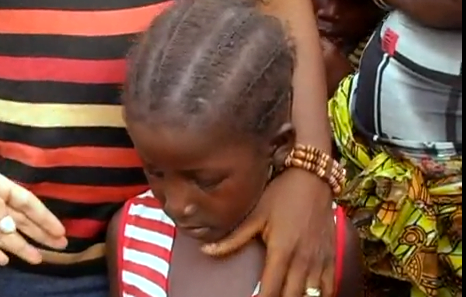Today, February 6 marks the 10th annual Day of Zero Tolerance for Female Genital Mutilation. It’s an awful thing to have to commemorate. According to the World Health Organization, about 140 million women and girls are living with the consequences of FGM–the vast majority (about 101 million) in Africa.
Here’s the clinical description of FGM from the WHO:
Female genital mutilation (FGM) comprises all procedures that involve partial or total removal of the external female genitalia, or other injury to the female genital organs for non-medical reasons.
The practice is mostly carried out by traditional circumcisers, who often play other central roles in communities, such as attending childbirths. However, more than 18% of all FGM is performed by health care providers, and this trend is increasing.
FGM is recognized internationally as a violation of the human rights of girls and women. It reflects deep-rooted inequality between the sexes, and constitutes an extreme form of discrimination against women. It is nearly always carried out on minors and is a violation of the rights of children. The practice also violates a person’s rights to health, security and physical integrity, the right to be free from torture and cruel, inhuman or degrading treatment, and the right to life when the procedure results in death.
Procedures
Female genital mutilation is classified into four major types.
- Clitoridectomy: partial or total removal of the clitoris (a small, sensitive and erectile part of the female genitals) and, in very rare cases, only the prepuce (the fold of skin surrounding the clitoris).
- Excision: partial or total removal of the clitoris and the labia minora, with or without excision of the labia majora (the labia are “the lips” that surround the vagina).
- Infibulation: narrowing of the vaginal opening through the creation of a covering seal. The seal is formed by cutting and repositioning the inner, or outer, labia, with or without removal of the clitoris.
- Other: all other harmful procedures to the female genitalia for non-medical purposes, e.g. pricking, piercing, incising, scraping and cauterizing the genital area.
But here’s what it looks like in practice:
The good news is that thanks to awareness raising and other interventions, FGM is on the decline. From UNICEF
Fewer girls are subjected to the life-threatening practice of Female Genital Mutilation/Cutting (FGM/C) according to new data from the United Nations, released on the International Day of Zero Tolerance of Female Genital Mutilation/Cutting.
The data shows that FGM/C is becoming less prevalent overall and the younger generation is less vulnerable to the practice.
In the 29 countries in Africa and the Middle East, where the practice of FGM/C is concentrated, on average, 36 per cent of girls aged 15-19 have been cut compared to an estimated 53 per cent of women aged 45-49. The decline is particularly sharp in some countries: in Kenya, for example, women aged 45-49 are three times more likely to have been cut than girls aged 15-19.
“This progress shows it is possible to end FGM/C” said UNICEF Executive Director Anthony Lake. “FGM/C is not only deeply wrong, we can and must end it to help millions of girls and women lead healthier lives.”
These recent estimates produced by UNICEF show that at least 120 million girls and women have experienced FGM/C in these 29 countries. Given present trends, as many as 30 million girls under the age of 15 may still be at risk. The United Nations Population Fund (UNFPA) and UNICEF Joint Programme on FGM/C is currently making progress in preventing these girls and future generations from being exposed to FGM/C.
The new estimates follow the unanimous adoption of a UN General Assembly resolution in December 2012 calling on member states to intensify efforts toward the complete elimination of FGM/C.
For more information about FGM, what can be done to stop it worldwide check out these groups. If you have any groups to suggest, post a link in comments or hit me up on twitter and I’ll list them below.
We still have a long way to go, but this harmful practice is on its way out, though not soon enough.
